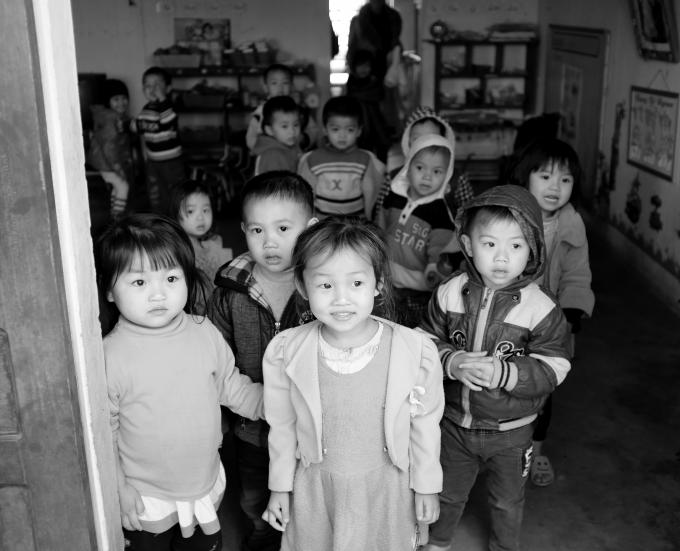The Forgotten Emergency: In Vietnam, Child Protection Systems Strengthening and Disaster Preparedness Offers Lessons for Other Countries in Child-Informed and Prioritized Planning
In an emergency context, shelter and infrastructure tend to garner a lot of focus from local authorities—as well it should in many cases, as shelter is a basic right—and it was no surprise in Vietnam, experiencing two typhoons before the world’s attention turned to the Philippines in the aftermath of Typhoon Haiyan, that local authorities talked extensively about their struggles to meet all of the shelter and other infrastructure, such as school repairs, needs and demands. It did not take a lot of prodding on my part, however, for local authorities to talk about their disaster risk reduction and response planning as well as their efforts to strengthen systems which responded to the needs of women and children, which was a good effort to build foundations under a burgeoning system.

In several affected areas, Commune and People’s Committee members spoke enthusiastically about their disaster risk and evacuation planning and how this planning revolved first around the priorities of women and children. We note the good practice of including Women’s Union representatives in disaster preparedness planning. In Hung Trach commune an area of frequent flooding and where over 70% of the homes had roof damage due to high winds, the Women’s Union representative recounted how women and children were their first consideration. “We organized boats to evacuate women and children first and the disaster group works with individual households on disaster preparedness,” she commented proudly. A community member echoed this sentiment: “We wrapped up the children’s school books and stationery items and some of their clothing and made sure it was in a place where it wouldn’t be damaged by water.” It’s not often that I hear parents prioritizing their children’s school books and although it may seem a rather small matter, in actuality it is often the loss of these items that can make the difference in a child rejoining school in the aftermath of a disaster as families are typically burdened with the loss of income and livelihoods and find it difficult to replace these items. Save the Children did provide back to school kits for many children from the most marginalized households, but the good efforts of communities and local authorities to prioritize children’s needs—and to take into account children’s concerns—are highlighted as excellent examples of child informed disaster preparedness planning.
Most of the local authorities that we met thought that psychosocial distress issues among children were not overt as a result of the twin typhoons and subsequent flooding. One rationale for this came from our meetings with teachers all acknowledging that as teachers they were provided with some basic “psychological” and counseling skills as part of their teacher training. It certainly helped that schools were able to reopen rather quickly after the emergency, thereby, providing a safe and structured environment for children. But teachers, and school administrators, were quick to point out that their psychosocial first aid skills were fairly basic and that they could benefit from and wanted to learn more about assisting children with their well being needs. Many schools are already beginning to integrate and mainstream components of disaster risk reduction into their curriculums, in health and physical education, for example, and, as one teacher pointed out, “psychosocial support training would help us understand the practice of providing support more extensively and we could even use those skills to raise awareness on protection issues with the larger community—with parents and caregivers.”
This coincides well with our discussions with Bo Trach district Social Affairs officials (DOLISA) on our first day in the field. They specifically mentioned “bringing back a counterpart system” by which districts worked more closely with local level officials and that capacity building support for local committees and officials would be welcomed and would strengthen the overall child protection system. Like in many other countries, Vietnam’s child protection systems are challenged in a humanitarian context to meet various demands, yet there are visible signs that with its focus on mainstreaming protection initiatives in other aspects of disaster risk reduction and preparedness planning and a strong emphasis on prioritizing women and children that the continued growth and effectiveness of child protection systems in the country is bright.
David Brickey Bloomer
Asia Regional Child Protection Advisor
 Vietnam
Vietnam 